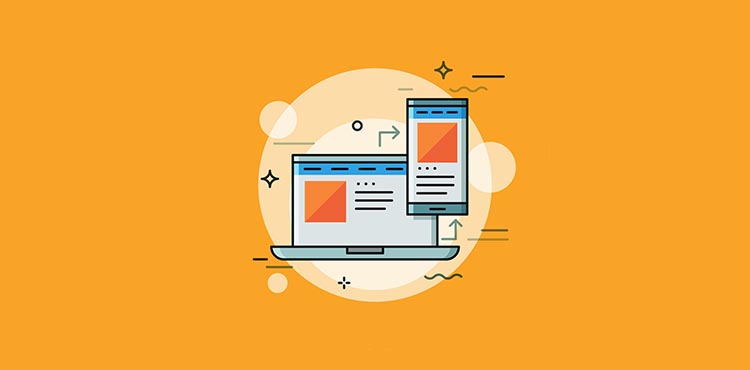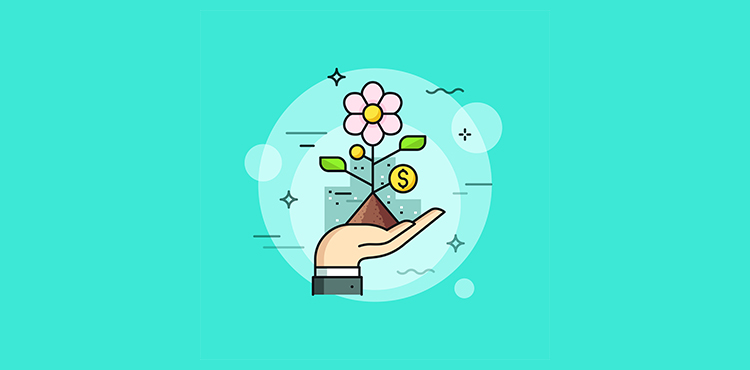The Artificial Intelligence (AI) revolution is transforming business operations, including human resources (HR), making it a necessity for small to medium-sized businesses (SMBs). This article guides business leaders through the impact, benefits, preparation steps, and challenges of implementing AI tools in HR practices.
What is artificial intelligence?
Artificial intelligence involves the development of computer systems capable of performing tasks that typically require human intelligence. These tasks include visual perception, speech recognition, decision-making, and language translation.
In the context of HR, AI encompasses the use of machines to automate repetitive tasks, analyse large volumes of data, and provide insights for better decision-making.
Future trends in AI and HR
As technology continues to evolve, it is important for SMB leaders to stay abreast of the latest trends in AI and HR so that they can be ready when such tools find their way into the workplace.
Predictive analytics
Predictive analytics involves using historical data to predict future outcomes. In the context of HR, predictive analytics can be used to predict employee turnover, performance, and engagement levels. Having this information could help HR teams to take proactive measures to address any potential issues before they become major problems.
Natural language processing (NLP)
Natural Language Processing (NLP) is a branch of AI that focuses on the interaction between computers and human language. In the context of HR, NLP can be used to analyse employee feedback, conduct sentiment analysis, and provide insights into employee engagement and satisfaction levels.
Chatbots and virtual assistants
Chatbots and virtual assistants are AI-powered tools that can interact with employees in real-time and provide instant responses to their queries. These tools can be used to automate repetitive tasks such as answering frequently asked questions, scheduling meetings, and providing information about company policies and procedures.
Key areas in HR where AI could make a difference
Recruitment
The recruitment process stands to be transformed by AI-enabled tools. These tools have the potential to automate various aspects of recruitment, from screening resumes and matching them with suitable job descriptions to scheduling interviews and providing candidates with real-time feedback.

Taken to the maximum degree, perhaps they could even predict a candidate’s job performance, aiding in the selection process. Importantly, AI tools can already assist in crafting job postings that are devoid of gender bias, thereby fostering diversity and inclusion in the workplace.
Employee engagement
Enhancing employee engagement is another area where AI-enabled tools can be particularly beneficial. Taking the human element out of the process, such tools could potentially analyse feedback from employees, monitor their engagement levels, and subsequently provide recommendations to improve engagement.
By identifying the reasons behind low employee retention rates, AI tools could then suggest actions for their human counterparts to address these issues.
Performance management
In performance management, AI can play a crucial role by helping set performance goals for employees, monitoring their progress towards these goals, and providing real-time feedback. These tools could even take the hassle and concern out of manager evaluations by pinpointing areas that require improvement for them.
Additionally, by identifying the strengths and weaknesses of any employee, AI tools could craft personalised development plans to help employees enhance their skills and ultimately benefit the entire organisation.
Learning and development
When it comes to strengthening learning and development programs, future AI tools could analyse an employee’s learning style, past performance, and career aspirations, and then recommend courses that are most relevant to the employee.
They could in theory also track the employee’s progress through these courses and provide feedback to help them improve. Moreover, when applied to the organisation’s data, such tools could identify skills gaps and suggest training programs or present hiring needs.
Employee wellness
Employee wellness is becoming a top priority for organisations, and AI can play a crucial role in this area as well. AI-powered tools could interface with various systems to monitor employee health and wellness in ways that humans just aren’t able to. Beyond that, they would also suggest interventions by HR team members or perhaps proactively offer virtual coaching and support.
What benefits can SMBs expect when adopting AI tools into their HR practices?
Cost efficiency
One of the most significant benefits that SMBs can expect when adopting AI tools into their HR practices is substantial cost savings. The automation of various HR tasks leads to a reduction in the administrative burden and, consequently, operational costs.
In optimizing employee engagement and performance management processes, AI will reduce the need for extensive manual intervention and, thereby, further reduce operational costs. By streamlining these processes, SMBs can allocate their resources more efficiently, ultimately leading to significant cost savings.
Time saving
By automating repetitive tasks, AI can allow the HR team to focus on more strategic activities. Automating the employee retention process, for example, enables the HR team to concentrate on developing strategies to enhance it. It also helps in reducing the response time to employee queries and concerns, improving employee satisfaction.
Improved employee experience
AI offers personalised experiences to employees, from recruitment to learning and development. It can recommend tailored learning paths based on an employee’s career aspirations and learning style. It can also help in creating personalised onboarding programs, ensuring a smooth transition for new hires.
Enhanced decision making
AI tools have the capability to analyse vast amounts of data, providing critical insights that can significantly improve decision-making within an organisation. One of the key areas where this is particularly beneficial is in addressing employee turnover. High employee turnover is a concern for many organisations, and understanding its causes is crucial for developing strategies to mitigate it.
Additionally, AI could also be used to help in identifying the top performers within the organisation. Imagine always knowing who the best employees are and being able to understand the traits that make them the most successful.
Scalability
For small and medium-sized businesses, scalability is a critical consideration. As these businesses expand, their HR needs grow correspondingly, necessitating the implementation of solutions that can grow with the organisation. Implementing AI in HR facilitates the scaling of operations without a proportional increase in costs.
This is because AI tools can automate many of the repetitive and time-consuming tasks associated with HR, reducing the need for additional personnel.
Preparing to bring AI into your organisation
Assessing the current HR processes
The initial step in preparing for the AI revolution in HR is to evaluate the existing HR processes and determine where AI can add value. If the recruitment process is time-consuming and costly, for example, implementing AI in this area would be advantageous.
Choosing the right AI tools
Various AI tools are available in the market, each with its own features and capabilities. It is crucial to select the AI tools that align with the organisation’s needs and objectives. If the organisation aims to improve employee engagement levels, an AI system that can analyse natural language employee feedback and provide recommendations would be beneficial.
Training the HR team
The HR team must possess the necessary skills and knowledge to use AI effectively. Providing training to the HR team on leveraging AI-assisted systems and interpreting the results is essential. It is also important to address any concerns or reservations the HR team may have.
Implementing AI in phases
It is advisable to implement AI in HR in phases. Begin with one area, monitor the results, and then proceed to the next area. For instance, start with implementing AI in the recruitment process, monitor the outcomes, and then move on to employee engagement.
Monitoring and adjusting as needed
After implementing the AI tools, it is crucial to monitor their performance and adjust the implementation if necessary. If the AI system in the recruitment process does not yield the expected results, or doesn’t make the team more efficient, it may be necessary to adjust the implementation or select a different tool.
The importance of employee feedback when introducing AI systems
Gathering and analyzing employee feedback is also crucial to successfully adopting AI in the workplace. Employees are the end-users of these AI tools, and their feedback can provide valuable insights into their effectiveness, any potential issues, and areas for improvement.
Conducting surveys
Regular surveys can be conducted to gather feedback from employees on their experiences. These surveys can include questions on the usability of the AI, whether they’re realizing anticipated outcomes, and any challenges faced by the employees.
Focus groups
Organizing focus groups with employees can provide more in-depth insights. These focus groups can be organized with employees from different departments and levels of the organisation to get a comprehensive view.
Feedback analysis
The feedback gathered from the surveys and focus groups should be analyzed to identify any common themes, issues, or suggestions for improvement. This analysis can also be used to inform any necessary adjustments.
The role of leadership in AI implementation
For the successful implementation of AI in HR, the role of leadership is paramount. Here are some considerations for SMB leaders.
Vision setting
The first step towards successful implementation is for leaders to articulate a clear and compelling vision. This vision should encompass the objectives, expected benefits, and the role of AI in the broader organisational strategy. A well-articulated vision serves as a guiding light for the entire implementation process and helps align the efforts of all stakeholders.
Exemplary leadership
Leaders need to be the change they wish to see. By actively embracing and using AI tools in their work, leaders can inspire their teams to do the same. This not only encourages employees but also helps leaders identify potential issues and areas for improvement.
Support provision
Support from leadership is crucial during the implementation process. This involves allocating necessary resources, facilitating training, and addressing concerns or reservations. Adequate support ensures a smooth implementation process and helps overcome challenges.
Progress monitoring
Leaders should actively monitor the progress of AI implementation. This involves reviewing the AI tools’ performance, analysing employee feedback, and making necessary adjustments. Regular monitoring ensures the implementation stays on track to achieve its objectives.
What challenges should you expect when bringing AI into your workplace?
Privacy and security of data
The analysis of large volumes of employee data is a key component of AI implementation in HR. Ensuring secure storage and processing of this data while respecting employee privacy is crucial. Employees should opt in to have their data used in AI tools, and companies should be cautious about sharing proprietary data.
Managing change
Implementing AI in HR often requires changes to existing processes and workflows. A comprehensive change management plan, including communication, addressing concerns, and providing necessary training and support, is essential for a smooth transition.
Implementation costs
The costs associated with purchasing AI tools, training the HR team, and adjusting existing processes must be carefully considered. It is important to ensure that the investment is justified by the anticipated benefits.
Collaboration between AI and humans
While AI can automate various HR tasks, it is essential to ensure collaboration between AI and humans. For example, although AI can assist in screening resumes, the final decision on hiring should be made by a human.
Addressing bias
Unintended or unconscious bias can manifest in AI-enabled systems, leading to unfair decisions. Teams should be aware of this potential issue and address it by regularly reviewing and adjusting the AI algorithms.
Legal and ethical considerations
It is essential to consider the legal and ethical implications of implementing AI in HR. For example, the use of AI in recruitment must comply with equal employment opportunity laws and regulations.
Acceptance by employees
The success of AI implementation in HR largely depends on employee acceptance. Communicating the benefits of AI, addressing concerns, and providing training can help gain employee acceptance.
Continuous improvement
Implementing AI in HR is a continuous process that requires regular review of the AI tools’ performance and necessary adjustments to ensure their effectiveness.
In Summary
Embracing the AI revolution in HR is essential for SMBs striving to optimise operations and enhance the employee experience. While there are challenges to navigate and considerations to bear in mind, adequate preparation can empower SMB leaders to harness the full potential of AI in HR.
This involves not only selecting the right tools and training the team but also continuously monitoring and adjusting the implementation. Ultimately, this strategic approach will lead to refined HR operations, a more positive employee experience, and the achievement of key business objectives.
About the Author
Matthew Meadows is the CEO of WorkStory, a platform that helps employees grow without the need for time-consuming performance reviews. Through his work, Matt challenges traditional methodologies that no longer resonate in today’s dynamic workplace.


